My Wife Of 45 Years Died. I Thought I Truly Knew Her — Until I Discovered Her Journals.
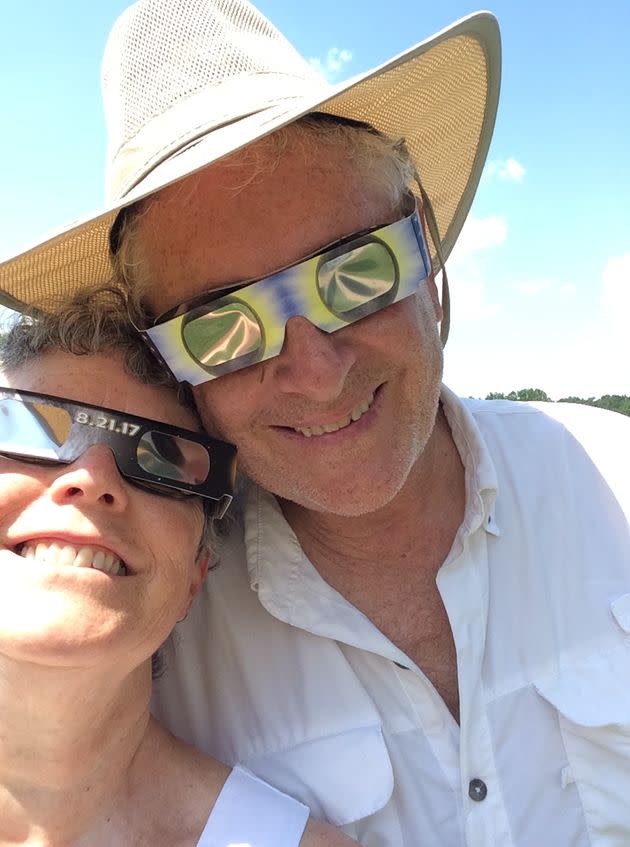
“Feel her toes and feet. When they turn cold, you’ll know. You’ll know she’s ready to go,” the hospice nurse told me. “Human bodies are predictable.” She had witnessed life’s final act hundreds of times.
This was my Sue’s 13th day in hospice.
I held her hand, still warm.
My wife of almost 45 years, my Sue, lay motionless, life draining from her body.
Her thin, gray hair fell in tufts around her head. Her eyes were closed. Her body was a wisp under the blankets. Her breathing was shallow. Her cold toes pointed toward the ceiling, and I wrapped my fingers around her heels. They felt hard, as if they were only bones, and the coldness was like a wetness that I couldn’t get off my hands, even though I kept wiping them on my pants, a towel and the bedspread.
Sue arched her back as if she were trying to touch her shoulders together and then her body fell back, relaxed, and was still.
She died at 10:22 a.m., April 18, 2018.
No pulse, no heartbeat, no finger squeeze like the day before.
Sue was 73, killed by breast cancer that had gone undiagnosed for years despite regular checkups. The radiologist had missed the malignancy hiding behind scar tissue, and it spread without mercy.
Sue gave me instructions when she knew she was dying: “Think about one thing you’ll do right after I die. Just do the one thing, and then do another and then another.”
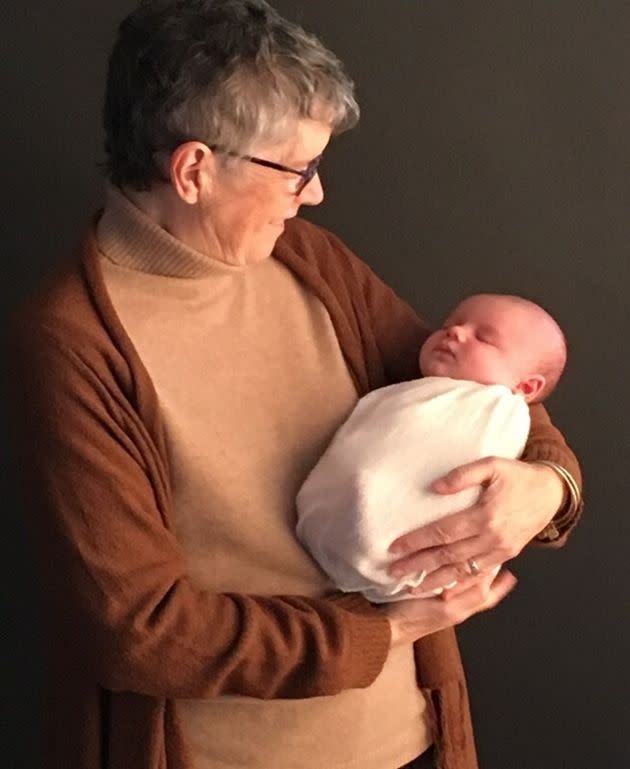
She understood me. If I thought about the enormity of losing her, I might go nuts, or do impulsive and stupid things. I had done many impulsive and stupid things in my life, which is why my father called me Schmendrick (a Yiddish term for a stupid person or fool).
Wasn’t the fact that Sue and I were together proof of my ability to jump headfirst into situations that many people would consider foolish?
I knew Sue was smarter than me, and she was right: The first moment without her was paralyzing, so I did nothing.
I just stood there holding her hand. If I let go, the hospice staff would take her body away. She would no longer exist. She would be erased, other than in our memories. I couldn’t bear that, and I was not ready. Sue had known I wouldn’t be.
I couldn’t cry. I was silent. I looked at my daughters, my 2-month-old grandson, and then back at Sue.
I waited for her to tell me what to do, how to react, how to feel and when to leave, as she had always done. I needed her to tell the family when to gather again. I needed her to explain this death.
“Just do the one thing,” I heard her say again in my head.
People thought Sue was shy. Pleasant. Practical. She kept her emotions tight inside her. I reasoned that Sue was stoic — a person who could endure pain without complaining, and handle life’s inevitable deep hurts and disappointments without sharing the load. And I never asked her directly about her emotions.
After 45 years, I thought I knew her. But I didn’t.
Days after she died, I pulled out a wedding-day photograph from June 26, 1973. Sue, 29, looks like a delicate hippie goddess with her long brown hair and peasant dress. I am 26. Skinny, redheaded, bearded, an eager Schmendrick ready to smash the glass under my foot at our wedding ceremony, under the chuppah, and in one firm stomp.
We broke with Jewish tradition and decided that both of us would smash a glass. This was all new to Sue, who grew up on a farm in Union City, Pennsylvania, as a Presbyterian.
“Whatever you do,” I said, “Don’t miss the glass. That’s lifelong bad luck.”
Sue’s stomp was tentative, and the glass rolled out from under her foot. Perhaps, at that moment, she realized how hard it would be to put her foot down when it came to me.
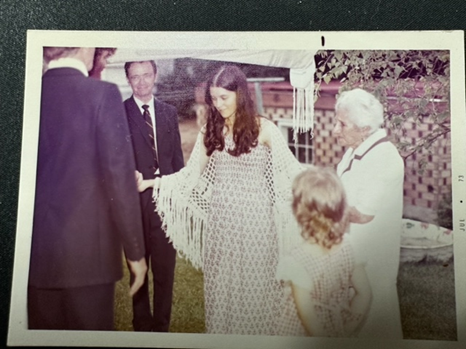
No wonder she was nervous. We had met 10 months before that photo was taken. We worked together at Penn State. She was married, in the process of divorcing her husband of seven years, with a 4-year-old daughter, Cathy, and another daughter who wasn’t mine on the way.
During our first lunch date, Sue said she knew early on that she never should have married her first husband. I didn’t ask why. I was distracted by the sexy dip in her upper lip, her tender smile, her soft voice, and how her body fit with mine.
I had proved myself a screw-up in ways that mattered to most people. I got kicked out of Penn State’s undergraduate school, and had to claw my way back to get my bachelor’s degree in international economics and then my master’s in psycholinguistics. Sue got a master’s scholarship from Penn State in horticulture. I was going to get a Ph.D. scholarship from the University of Wisconsin and Sue told me that she would go with me, but only if we got married.
Yep, Sue wanted to marry Schmendrick. She had two little girls who depended on her, yet somehow this smart woman decided she would depend on me. Trust me. That she needed me.
Sue was the most mature woman I had ever dated. Did I marry her to show the world I wasn’t a screw-up? I realized that I needed to be mothered by a person who was more centered than me. And being a father gave me a serious job. I adopted Cathy and Cristene, who was just 7 months old when Sue and I got married. Our daughter Jessica came along in 1980.
I did many things to show the world, like getting my Ph.D., becoming a university dean, and attaining wide recognition for my international work. I started the first private business school in Central and Eastern Europe, in Budapest, Hungary.
Our lives seemed to roll along like a Lexus that was comfortable and dependable, until Sue got terminal cancer. I became numb and couldn’t cry following her death. Still, I somehow managed to “just do the one thing,” like keeping appointments and arranging her memorial ... until I couldn’t.
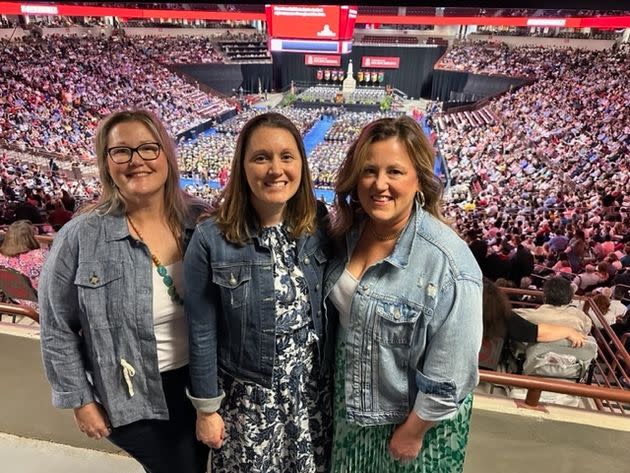
Two months after Sue’s death, I walked into an optometrist’s office. The receptionist had a frowning face and a bored smirk, which I suspected was from asking the same questions every 15 minutes: “Name? Insurance? Address?” I answered each one rapidly.
“Marital status?” she asked.
Marital status? I panicked. I am married. Wait, no, I’m not. I’m single — well, sort of. Am I a widower who is single? A single person who had a wife, and therefore a widower? Am I still married without a spouse?
The receptionist asked again, “Sir, marital status?”
“Widower,” I said out loud for the first time. When I left the appointment, I sobbed in the parking lot the way that most people cry the day of a person’s death. I felt a gut-twisting feeling: I may not stop crying.
That’s the day I understood how little I knew about what was happening to me. I felt as if a part of me had been amputated, and I had no idea what was left.
That’s the day my grieving started for real and became a constant companion.
Then I did what I’d always done when confronted with a challenge: read others’ experiences in research, memoirs and fiction, watched films, and talked to people.
I watched Ricky Gervais’ fictional TV series “After Life” and saw how his character struggled with losing his wife. I could relate to everything he felt. His anger was mine. My anger came out at family gatherings, when I insisted that my daughters tell me how they felt, and at work, where I found myself defying authority.
Grieving became a chisel. It broke away the shell of what I had believed about Sue, myself and our relationship, and forced me to see that I didn’t know Sue deeply.
We had used unspoken rules of conduct, dimmed our intimacy and foiled self-inspection. I learned that despite our years together, Sue had locked away secrets. We used loving gestures and words to avoid authentic and painful truths — what Buddhists call “near enemies.” We never asked each other the important question: “Who are you in the deepest part of your heart and soul?”
My Sue left a few handwritten notes in books and files around the house, as well as several journals. When I began to read them, I found that she was not stoic. She had plenty of painful thoughts that she’d never said out loud.
“I think I hate him,” she once wrote, referring to me.
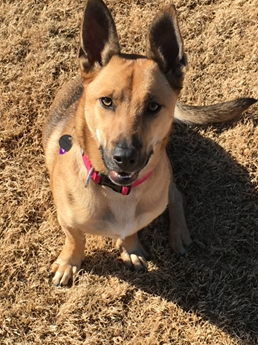
I was successful but chronically bored, so I hopped around impulsively, securing jobs in various cities and dragging Sue and the kids with me. I was blind to her desires, and she was reluctant to rip me a new one.
I never knew that she hated our move to Pittsburgh in 1990, our seventh relocation since 1973, including one to Budapest. I learned from her journals that Sue had been tired of the changes, but she never said so to me. She picked out two Pittsburgh houses she liked. We had to buy one quickly, and I chose the wrong one. Sue asked me to walk away from the deal the day of signing. Why didn’t I?
Was that why she hated me? Or was it because she wanted to get her Ph.D. in horticulture, a desire I discovered in her journals, yet my demands took precedent over hers? Or was it that I did not see her for who she was? And if she had something to say, why didn’t she say it out loud?
I went to therapy after her death and kept reading. I was forced to unravel the assumptions that we had based our lives upon. I felt lost about who she was at the core. My feelings were like that glass I had shattered under my foot all those years ago — broken and unfixable.
My therapist diagnosed me with attention-deficit/hyperactivity disorder, a neurodifference that makes me impulsive, lose focus, and have trouble using my brain’s executive functioning. My mind wanders like a pinball machine, a series of hyperlinks, tying together thoughts that have minimal connections. My teachers and parents, unaware of my ADHD, had told me, “You need to focus and try harder.” I was focusing and trying hard by attending to multiple things at once and moving fast.
I spent most of my time with Shayna Punim, the dog Sue got one year before she died so that I’d have a companion.
I began dating six months after Sue died — another example of my impulsive behavior. I swiped left and right on eHarmony. As Mary-Frances O’Connor said in the book “The Grieving Brain,” my brain was searching for what it lost, and I thought finding another woman would resolve that search. It didn’t. I felt more lost, less in touch with myself, and more confused about Sue and what we had together.
It took Sue’s words — “just do the one thing” — to keep me from doing too many impulsive and stupid things, like marrying the first woman who bought me a scotch at a bar.
My therapy, dating, research and discussions have helped me realize grief can be a stern, persistent teacher.
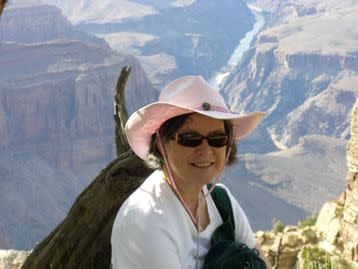
I see how much pain I caused by not recognizing Sue’s needs, and not asking what she wanted and why.
I see Sue when I look at the garden she planted, the place where we spread her ashes. The flowers bloom anew, year after year ... and so does my hope that I’ll discover more about her and myself.
I want another chance to ask my Sue all my questions, but I am not going to get it.
Still, despite what I learned about Sue after she died, I know that journals and diaries tell only part of the story. I don’t doubt that Sue loved me ― and I know that I loved and still love her ― but I now realize that her life might not have been exactly the life I thought it was. But isn’t that the way for all of us? How much do we share ― even with our closest loved ones ― and how much do we keep hidden? How much is left unsaid across almost half a century?
Why do we do this? And at what cost to us, and to the ones we love? What’s most important for me now is to understand more about Sue, who she was, and to reconsider my own life ― then and now. How can I honor my Sue as I knew her and as I didn’t? How can I take responsibility for the mistakes I made? Maybe it begins with this essay. Maybe my true grieving starts with processing who I was with Sue, who I am now — without her — and who I want to be going forward. As Sue said, just do the one thing.
Dan Fogel is a semiretired academic and entrepreneur living north of Charlotte, North Carolina, on Lake Norman. He spends most of his time writing and completing his memoir, visiting with family and friends, and walking with his dog, Shayna Punim. His academic career includes research, publications, teaching and consulting focused on environmental sustainability principles and practices in organizations. This work took him to various parts of the world, most notably Western, Central and Eastern Europe, and South America. You can find him at SP3 and dan@spthree.com.
Note: This piece was originally published in November 2023 and is being shared again as part of HuffPost Personal’s “Best Of” series.
Do you have a compelling personal story you’d like to see published on HuffPost? Find out what we’re looking for here and send us a pitch.

